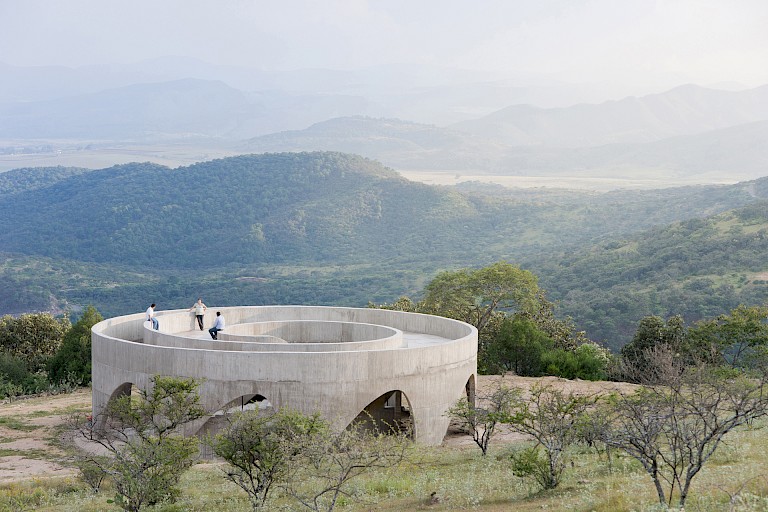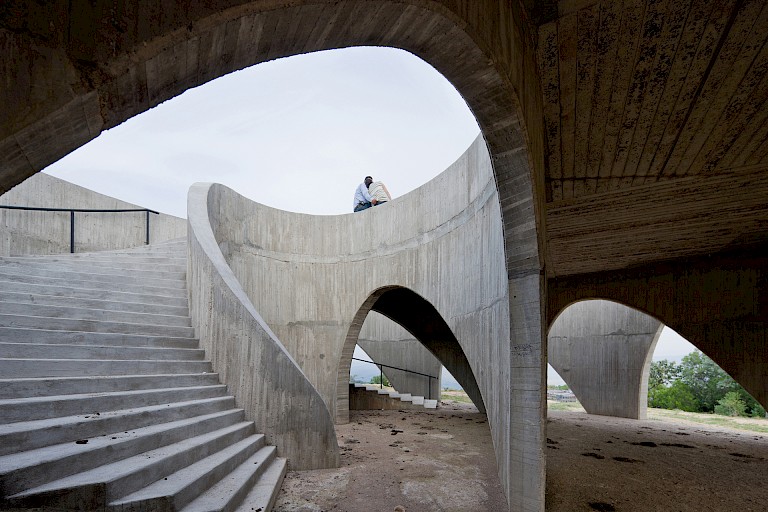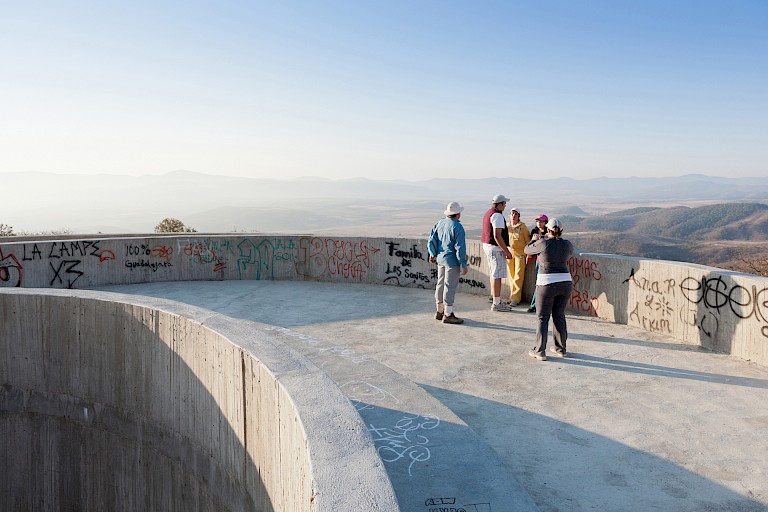



The master plan consists of an ecological corridor with infrastructure and iconic architectural pieces that add to the experience of the religious ritual. Successful structures enhance the spiritual importance of the route and also add a sense of permanence by providing basic services, such as shelter and look out points. They should also allow for serenity, inspiration, and introspection, assisting the pilgrims' emotional journey.
Lookout Point is one of those architectural additions to the route, and it’s designed to be an additional literal loop in the pilgrim's path. Its meandering, circular journey upwards, resembling the design of a labyrinth, ends at a lookout point perched on a high ledge, offering sweeping views of Jalisco. Visitors then descend back down the winding path and continue on their journey.
Lookout Point successfully integrates the spiritual emphasis of the project—a site of serenity and introspection—through its use of materials, its design and its enterprising placement as an elevated lookout point that spans for miles. The structure’s singular material and repetitive circular design facilitate an experience of meditative simplicity. These emotive qualities are woven in with the practical functionality of the space. Made almost entirely out of concrete, the lower half of Lookout Point is cooling and shaded. This relieving environment is designed to feel like an intimate sanctuary and includes a brick opening in the shape of a cross. On top, pilgrims reach a cathartic panoramic view; below, they find solace and respite.
This site has also become a social gathering space and created economic opportunism around tourism. Photographer Iwan Baan reflects on these benefits in his photo essay on the Ruta del Peregrino. “There, people immediately know what to do—they sit in the shade, they chat and drink, the children run around…[the site] become[s a] meeting point.”
Artistically, the structure leads the pilgrim to “experience the architecture as a journey,” said Nora Schmidt, writer for Architonic. The unimposing design gives the pilgrims an opportunity for contemplation.
The simplicity of the material resonates with the spiritual focus of the journey, as well as the sparse vegetation of Jalisco. Ultimately, Lookout Point addresses the pilgrims’ needs by affording rest, solace, and an opportunity for introspection. The structure is more than an aesthetically or symbolically significant piece of design; it is an interactive work that enhances the pilgrim’s experience along the Ruta del Peregrino.
All copyright belongs to Shanghai Academy of Fine Arts, Shanghai University.



